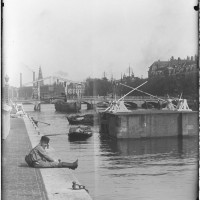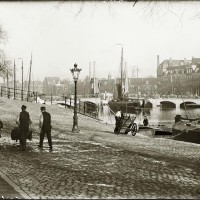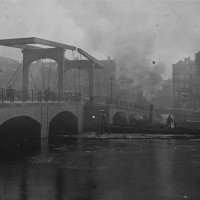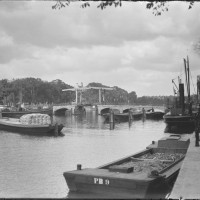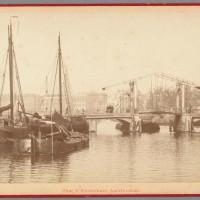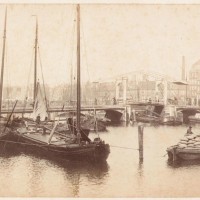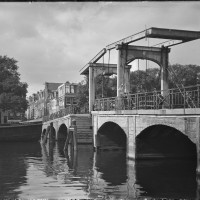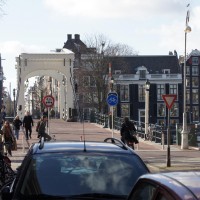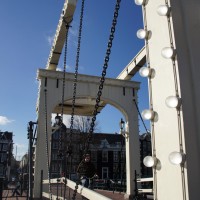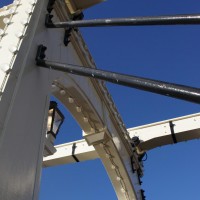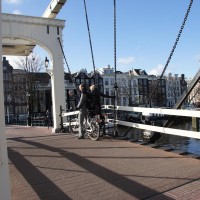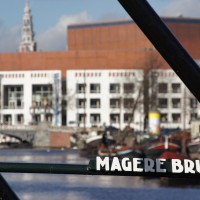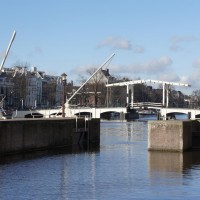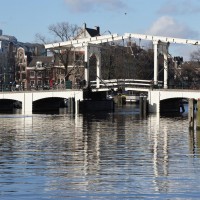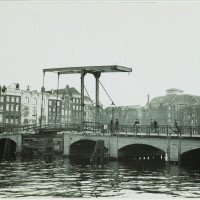The Magere Brug (“Skinny Bridge”) is a bridge over the river Amstel in the city centre of Amsterdam, the Netherlands. It connects the banks of the river at Kerkstrat (west bank) to the Nieuwe Kerkstraat (Church Street) on the eastern bank, between Keizersgracht (Emperors’ Canal) to the north and Prinsengracht (Prince’s Canal) to the south.
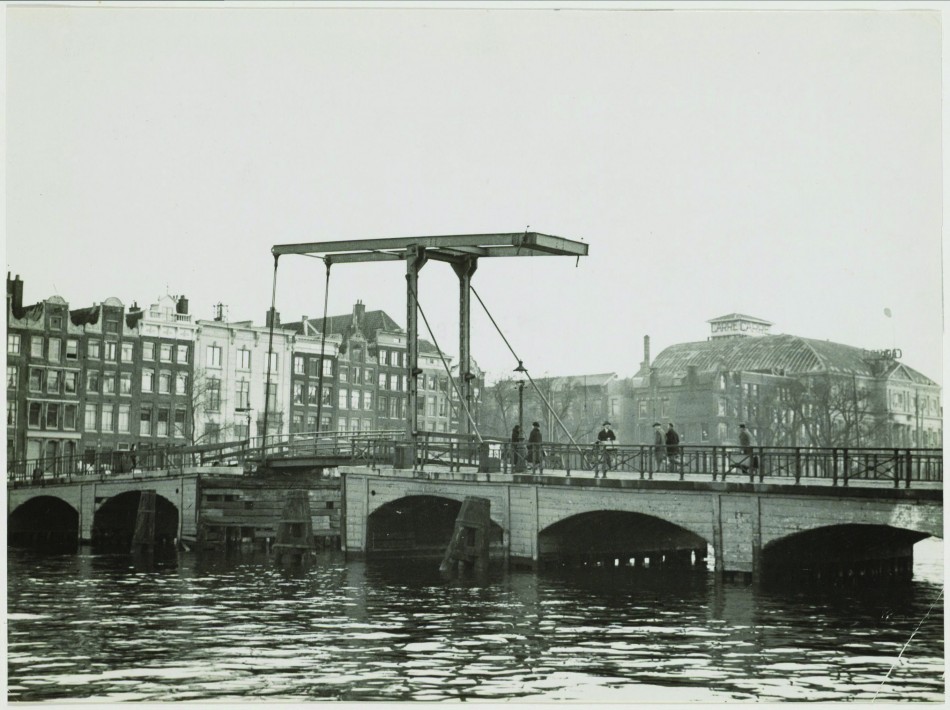
Magerebrug, 11 January, 1932 - from the city archive
The central section of the Magere Brug is a bascule bridge made of white-painted wood. The present bridge was built in 1934. The first bridge at this site was built in 1691 as Kerkstraatbrug and had 13 arches. Because this bridge was very narrow, the locals called it magere brug, which literally means “skinny bridge”. In 1871 the state of the bridge was so bad that it was demolished and replaced by a nine-arched wooden bridge. Fifty years later this bridge also needed to be replaced. Architect Piet Kramer made several designs for a steel and stone bridge, but the city decided to replace it with a new bridge that looked the same as the previous, only slightly bigger. In 1934 the bridge was demolished and replaced. The last major renovation was in 1969. Until 1994 the bridge was opened by hand, but now is opened automatically.
Use of the bridge has been limited to pedestrians and cyclists since 2003. It is however opened many times a day in order to let through river traffic. The boats used for sightseeing tours are low enough to pass underneath the bridge when closed. The bridge is decorated with 1200 light bulbs that are turned on in the evening. Last year those were replaced with LED bulbs. When they were first lit the new bulbs were so bright that they had to be turned way down. The deck of the bridge was re-bricked at the same time, and the pillars replaced. The bridge was also re-painted and re-opened with a huge LED Party. The lights that used to be a warm light yellow color are now bright white.
A story told to tourists about the origins of the 1691 version of the bridge is that it was built by two wealthy sisters who lived on opposite sides of the Amstel river and wanted to be able to visit one another every day (and were presumably too busy, or not in good enough health, to go the long way round via another bridge, of which there must surely have been at least one). In one variant of the story the sisters, although wealthy, were not quite wealthy enough to afford a bridge of adequate width for general use and so built a very narrow bridge, hence its name. In another variant of the story the sisters’ last name was Mager, hence the bridge’s name (rather than from its narrowness).
The bridge can be seen in a number of films, such as the James Bond film Diamonds Are Forever from 1971.
- Magere brug and Hogesluis, 1890 by Jacob Olie
- Magere brug and bridge over the Prinsengracht, 29 October, 1894 by Jacob Olie
- Magere brug photographed in 1911 by Eilers
- Magere brug and punter boat, photographed by Eilers April of 1909
- Magere brug photographed in 1870 by Pieter Oosterhuis
- Magere brug and working boats, circa 1867
- Magere brug in April 1909
- From the Nieuwe Kerkstraat looking west over the Skinny bridge towards the Amstelkerk on the Kerkstraat
- Chains that lift the center section of the bridge and new bright white LED bulbs
- Newly painted wood and steel, covered in frosted LED bulbs
- New LED lights that cover the refurbished Magere brug
- Great place for tourists to take photographs
- Name plate on the bridge and the opera house and Zuiderkerk in the distance.
- Magerebrug seen through the sluizes in front of Carre Theatre
- Magerebrug on the Amstel River in the center of Amsterdam
- Magerebrug, 11 January, 1932 – from the city archive


